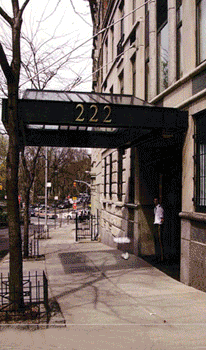NEW YORK - The mention of mass graves brings to mind the genocidal wars that have bloodied Bosnia, Rwanda and Central America. But at its meeting Friday, a state commission in Oklahoma discussed its search for mass burials along the Arkansas River in central Tulsa and elsewhere in the city.
The panel, the Tulsa Race Riot Commission, was created by the state legislature in 1997 to investigate violence that swept the city in 1921. In less than one day, rioting whites killed perhaps as many as 200 to 300 black citizens, burned more than 1,000 residences and razed one of the most prosperous business districts in the Southwest.
The exact casualty figures and property losses were obscured in a cover-up that kept the riot out of polite conversation and school history textbooks for nearly half a century. But with its report due out in the autumn, the commission will substantially expand what Tulsans know about a bloody night almost 78 years ago.
Many Americans associate racial disturbances with the 1960s. But the period from 1919 to 1921 was more viciously violent by far, due partly to dramatic shifts in the demography of race.
Black workers who had been historically confined to cotton fields in the South had begun to move north and compete with whites for factory jobs - often as strike-breakers, which was the only way many could get hired. In addition, black veterans returned from World War I insisting on the civil fights that Americans had fought and died for in Europe.
In Chicago, Omaha, Washington and Long View, Texas, white mobs burned and killed in black neighborhoods. But the worst violence occurred in the Greenwood section of Tulsa on June 1, 1921, when black families were burned alive in their homes or shot running away. The blacks shot back. But in the end, a thriving neighborhood of shops, hotels and gaming halls -which Booker T. Washington had dubbed "the black Wall Street" - was left bombed out and deserted.
The rioters targeted affluent blacks, whom -they regarded as "uppity Negroes." A nationally known surgeon, A.C. Jackson, was shot by a white teenager while running out of his flaming home. Jackson bled to death on the march to a makeshift internment camp.
Thousands of black Tulsans left with what they could carry. Those who stayed regretted it when grand juries dominated by the Ku Klux Klan indicted "armed colored men" who had done little more than defend their lives and homes.
The riots began after a spurious rumor, repeated in a newspaper article, that a black man had tried to rape white women in an elevator. Historians of the riot now say that The Tulsa Tribune's managing editor admitted to investigators just days later that an overzealous writer had made up the story.
But the most damaging thing was an inflammatory newspaper piece whose headline survivors recall as "To Lynch Negro Tonight." The article seems to have been deliberately expunged from remaining copies of the paper. Even so, survivors recall reading it at the time. The National Guard officer in charge at the scene placed part of the blame for the conflagration on "yellow journalism."
Don Ross, a state representative, grew up hearing black Tulsans smolder about the riot and the cover-up. Two years ago Mr. Ross gathered overwhelming support to create a commission that would "break the conspiracy of silence" surrounding the riot. The resulting panel, the Tulsa Race Riot Commission, is charged with arriving at an accurate death toll and estimate of property damage. But the commission's most sensitive mission is to decide whether reparations are warranted and what form they will take. .,
The commission is getting results. Legal documents that were thought to be lost have turned up, shedding light on bogus prosecutions stemming from the riot. Newly found survivors have been interviewed, among them a white man who testified before the panel that he had been a teenager during the Greenwood disturbance riding the riot zone while hostile whites hunted down Negroes.
A spokesman for the riot commission said earlier this month that excavators had been looking for bodies of riot victims at the edges of existing cemeteries and suspect that there may be mass graves at at least three sites. The commission is particularly interested in the 11th Street area of the Arkansas River, where witnesses say they saw guardsmen hurling bodies into the water.
The commission has found that bodies were stored temporarily on a sand bar in the river and then probably buried when no one came to claim them. One possibility is that graves We dug somewhere nearby, perhaps on the river-bank. The area is being searched with ground penetrating radar. Any bodies that turn up will be exhumed and examined. That work will fall to the forensic anthropologist Dr. Clyde Snow, who has investigated massacres in Latin America, Africa, Asia and the Balkans.
No one expects the story to end soon. After eight decades of silence, Tulsans are talking about June 1921 and are nowhere near ready to stop.
The New York Times.










